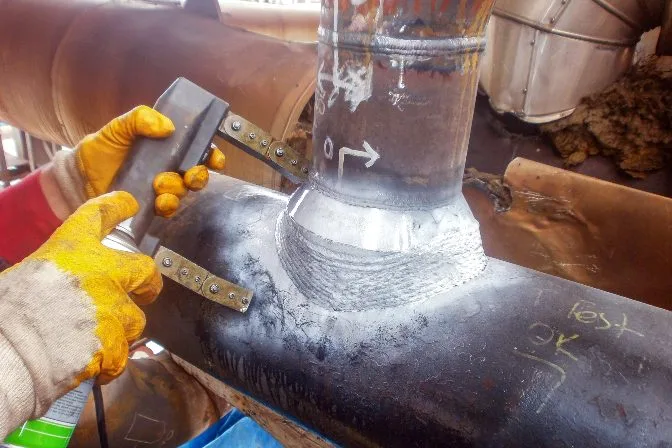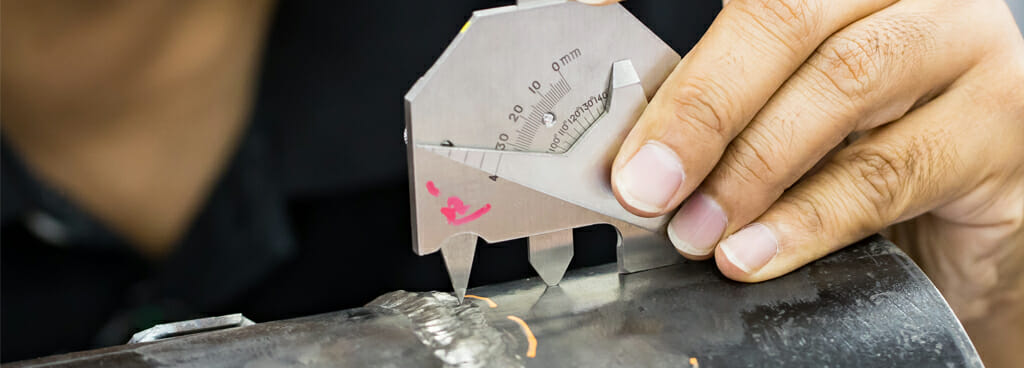A Comprehensive Guide to Understanding Exactly How Welding Evaluation Works: Strategies, Requirements, and Best Practices for Quality Assurance in Metal Fabrication
Recognizing the intricacies of welding examination is vital for preserving the integrity of metal manufacture. Implementing finest practices can significantly enhance top quality assurance measures. The landscape of welding examination is not without its challenges.
Importance of Welding Evaluation
Although welding is a vital procedure in different sectors, its integrity directly influences the safety and security and performance of components and frameworks. Efficient welding examination is necessary for recognizing flaws that might compromise the quality and durability of welded joints. This procedure makes certain adherence to developed requirements and standards, which are important for preserving structural integrity and operational dependability.
Welding evaluation serves several objectives, including confirming that the welding procedure has actually been carried out appropriately, assessing the quality of products utilized, and confirming that the finished item satisfies regulatory and market requirements (Houston Welding Inspection). Via rigorous examination, prospective concerns such as porosity, fractures, and incomplete blend can be discovered early, avoiding expensive repair services and minimizing safety and security threats
Furthermore, regular welding examinations foster confidence amongst stakeholders, consisting of engineers, clients, and governing bodies, by demonstrating a dedication to quality guarantee. The value of welding evaluation can not be overemphasized; it is indispensable not only for compliance with legal demands but also for enhancing the total efficiency of bonded structures. Inevitably, a durable welding evaluation program is a proactive procedure that safeguards against failures, making sure the longevity and reliability of welded parts in their desired applications.
Common Welding Assessment Techniques

Visual inspection is the very first line of defense, allowing assessors to identify surface area defects such as cracks, undercuts, or incomplete fusion. Radiographic screening utilizes X-rays or gamma rays to disclose internal defects, making it suitable for intricate welds. Ultrasonic screening utilizes high-frequency acoustic waves to identify subsurface defects, giving precise measurements of weld stability.
Magnetic particle screening works for ferromagnetic materials, highlighting surface area and near-surface interruptions when bits are put on an electromagnetic field. On the other hand, dye penetrant screening utilizes a liquid dye to disclose surface-breaking defects, guaranteeing that even the tiniest problems are detected.
Each method has its restrictions and strengths, frequently demanding a mix of techniques for detailed analysis - Houston Welding Inspection. By using these assessment methods, quality control in metal construction is attained, making certain that bonded structures meet security and performance standards
Industry Specifications for Welding

" />
The American Welding Culture (AWS) and the American National Requirement Institute (ANSI) are 2 prominent organizations that develop Look At This welding requirements. AWS D1.1, for instance, outlines the needs for welding steel structures, while AWS D1.2 concentrates on light weight aluminum. Internationally, the ISO 3834 common addresses quality needs for combination welding, supplying a structure appropriate across national boundaries.

Best Practices for Quality Control
Quality assurance in welding is extremely important to attaining sturdy and risk-free building and constructions. Carrying out best techniques ensures that every weld satisfies the called for standards and specifications. Initially, establishing a thorough high quality monitoring system (QMS) customized to the particular welding project is essential. This QMS should define duties, treatments, and duties to mitigate threats and improve responsibility.
Normal training and qualification of welding workers are crucial for keeping a knowledgeable labor force. Continuous education and learning on the most recent welding methods and innovations makes certain that examiners and welders are knowledgeable regarding present criteria and techniques.
In addition, performing pre-weld evaluations to assess products and tools can prevent problems before they occur. Houston Welding Inspection. During the welding process, real-time monitoring and documentation of welding specifications help determine disparities quickly. Post-weld inspections ought to entail comprehensive exams using non-destructive screening (NDT) approaches to ensure the honesty of the welds
Additionally, preserving clear communication among staff member advertises a culture of high quality. Normal audits and testimonials of the welding process aid recognize areas for improvement. By sticking to these ideal techniques, companies can accomplish optimum quality control, ultimately resulting in enhanced security and efficiency in steel fabrication jobs.
Difficulties in Welding Inspection
Although welding evaluation is essential for ensuring architectural integrity, it presents a range of difficulties that can complicate the evaluation procedure. One considerable obstacle is the irregularity in welding strategies and products used, which can affect the uniformity of weld quality. Various welders may use differing approaches, resulting in disparities that inspectors requirement to recognize and evaluate.
Another obstacle entails the discovery of issues. Non-destructive screening (NDT) approaches, such as ultrasonic and radiographic testing, can be complex and require competent professionals to analyze outcomes properly. Incorrect positives or negatives can occur, possibly causing expensive rework or jeopardized safety.
Additionally, the visibility of environmental elements, such as temperature level and moisture, can affect the integrity of welds and the effectiveness of assessment techniques. Assessors should likewise browse the regulative landscape, ensuring compliance with market requirements, which can vary by territory and application.
Final Thought
In conclusion, welding examination plays an essential duty in making certain the honesty and safety and security of metal fabrication. Employing a variety of assessment methods, adhering to established check here sector standards, and executing efficient high quality monitoring methods collectively improve the dependability of welded frameworks. In spite of the difficulties faced in the examination process, a dedication to continual enhancement and adherence to finest techniques can substantially boost the quality control structure, fostering better self-confidence among stakeholders in the welding sector.
Efficient welding inspection is crucial for recognizing flaws that might endanger the top quality and resilience of welded joints.Moreover, constant welding inspections foster self-confidence amongst stakeholders, including engineers, customers, and governing bodies, by demonstrating a commitment to high quality guarantee.The American Welding Culture (AWS) and the American National Standards Institute (ANSI) are 2 popular organizations that develop welding requirements. During the welding process, real-time surveillance and documentation of welding specifications aid identify inconsistencies right away. In spite of the difficulties encountered in the inspection process, a dedication to continual renovation and adherence to finest techniques can significantly reinforce the high quality guarantee structure, cultivating higher self-confidence amongst stakeholders in the welding industry.